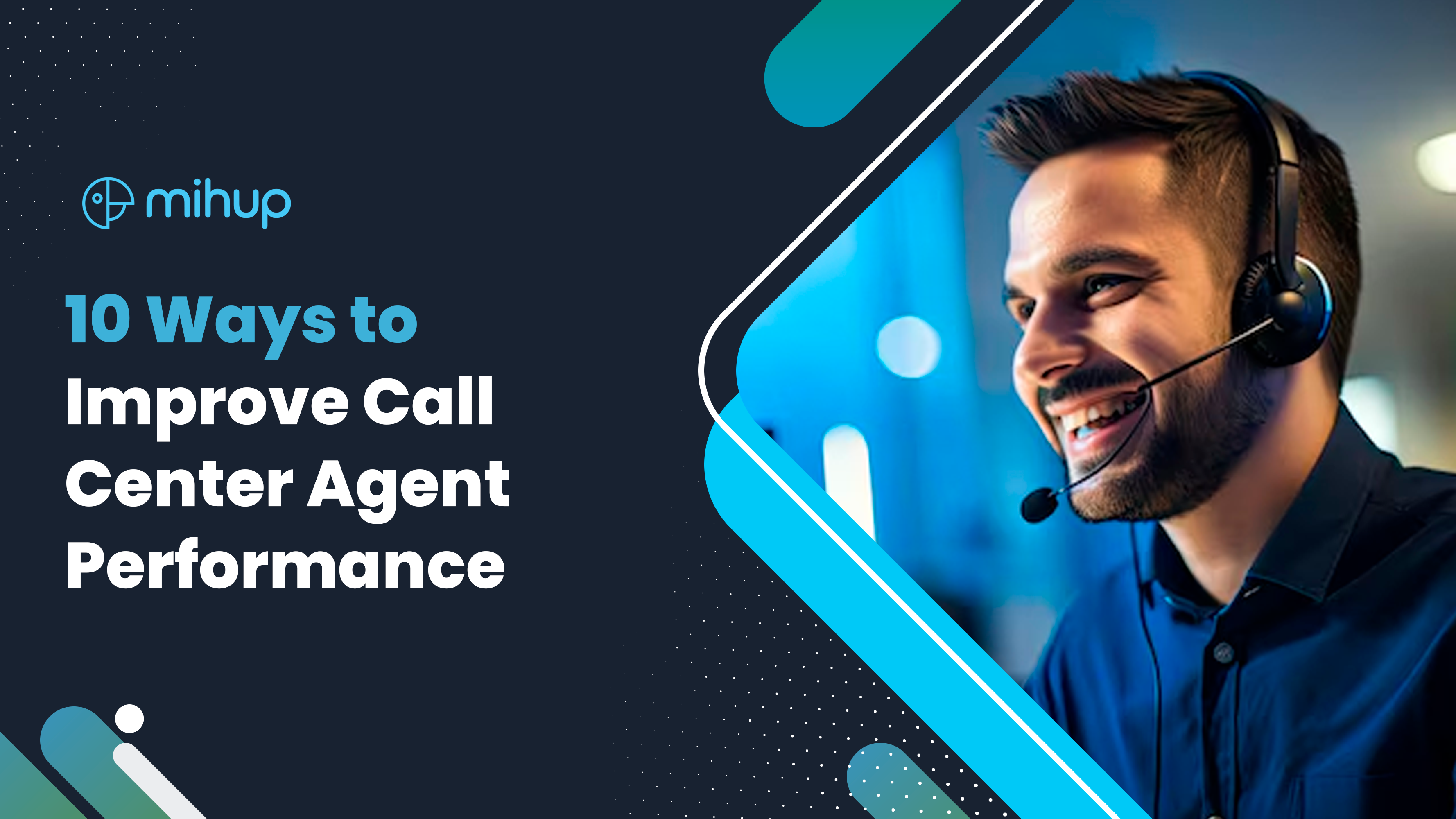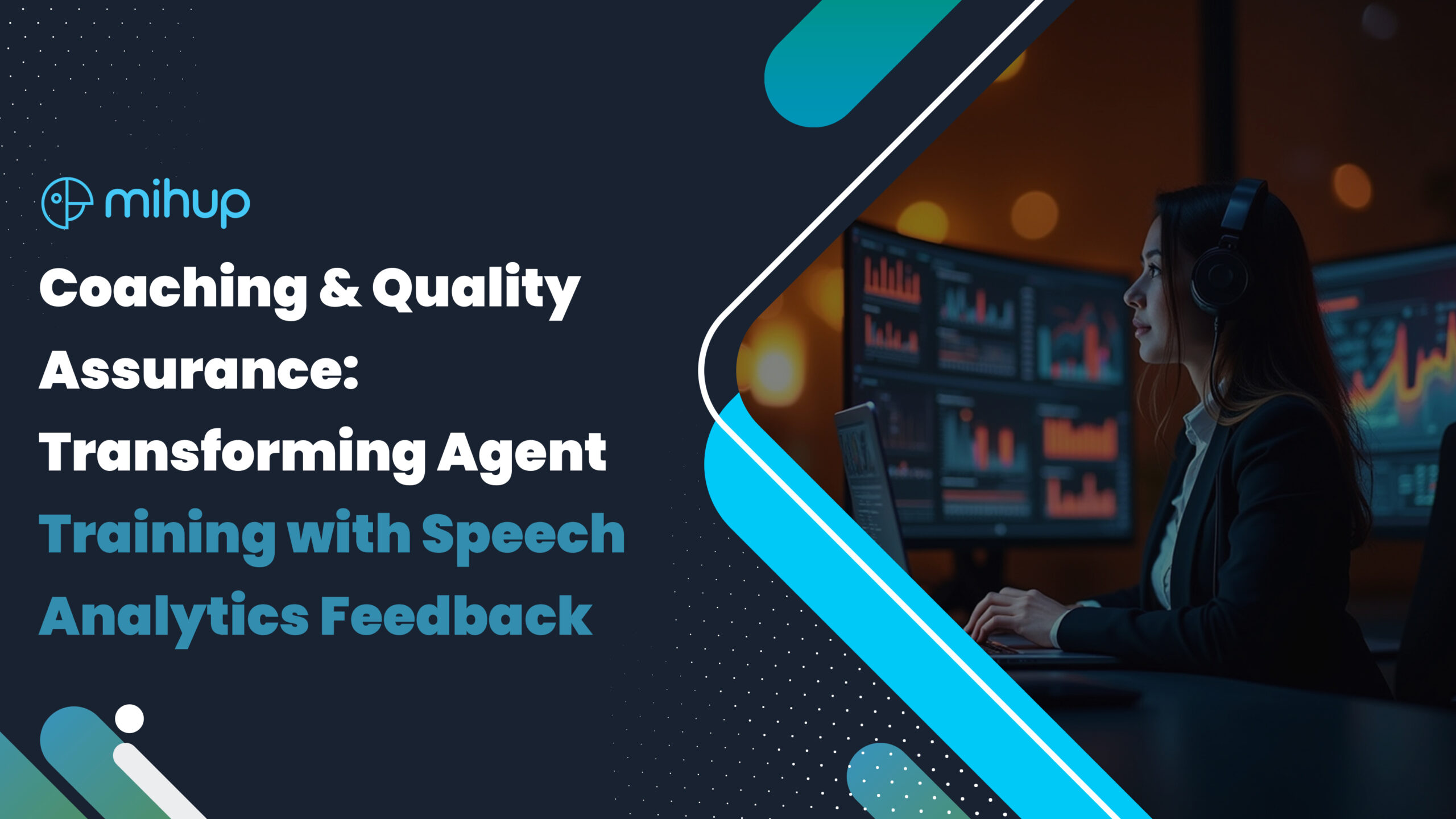In any business, call center agents are customers’ first point of contact when they have queries or issues. Undoubtedly, you want to leave a positive impression on your customers, and for that, you would like your customers to be happy and satisfied. However, achieving this depends heavily on the efficiency and performance of your call center agents. A reliable contact center is, therefore, the backbone of any business. It’s not just about having a great product or service; customers often base their purchase decisions on how well they are treated during every interaction.
High-performing agents don’t just resolve issues; they enhance the overall customer experience, foster loyalty, and contribute positively to your brand’s reputation. Given the critical role agents play, understanding how to improve call center agent performance is essential for any business striving to excel in customer service. In this article, we will explore key strategies and actionable tips to boost the performance of your call center agents, ensuring they consistently deliver outstanding service.
Key call center agent performance metrics
To effectively improve call center agent performance, it’s essential to monitor specific metrics that reflect productivity and efficiency. Here are some of the most important call center agent performance metrics to track:
Average Handling Time (AHT)
This metric measures the total time an agent spends on a call, including hold times and after-call work. A lower AHT typically indicates higher efficiency and faster issue resolution. This helps in enhancing overall call center efficiency.
First Call Resolution (FCR)
FCR measures the percentage of issues resolved on the first call without the need for follow-ups. High FCR rates reflect an agent’s competence and directly contribute to improved customer satisfaction.
Customer Satisfaction Score (CSAT)
CSAT gauges how satisfied customers are with the service they receive, often collected through post-interaction surveys or analytics tools. A high CSAT score is a direct indicator of a positive customer experience and effective agent performance.
Call Abandonment Rate
This metric tracks the percentage of calls on which customers hang up before reaching an agent. High abandonment rates often point to long wait times or inefficiencies in call handling, signalling a need for process improvements.
First Response Time (FRT)
FRT measures how quickly an agent responds to a customer after they’ve entered the call queue. High FRT may indicate issues like excessive administrative tasks or inefficient processes, making timely response crucial for improving customer experience.
Factors that Bring Down Agent Performance
Despite the best efforts, several factors can hinder agent productivity. Understanding these roadblocks is crucial to developing effective solutions. Common issues include:
- Lack of Training: Inadequate training can lead to longer call handling times and lower FCR rates.
- Poorly Designed Workflows: Inefficient workflows increase call times and post-call work and frustrate agents.
- Low Employee Morale: High-stress environments and lack of recognition can decrease motivation.
- Ineffective Tools: Outdated or slow tools and systems can hinder agents’ ability to perform.
- Unclear Expectations: When agents are unclear about their targets or benchmarks or they are given unrealistic targets, performance suffers.
- Inadequate Scripts: Poorly designed or outdated scripts can leave agents unprepared to address customer queries effectively, leading to decreased performance and lower customer satisfaction.
Now don’t let these factors slow you down. Let’s learn some great tips to help you overcome these challenges along with boosting your agent’s performance.
Tips to Improve Call Center Agent Performance
Improving call center agent performance doesn’t happen overnight; it requires a strategic, systematic approach. Here are ten actionable tips that can help you enhance your call center operations and elevate agent productivity:
1. Comprehensive Training Programs
Continuous training is vital for maintaining high performance. Develop comprehensive training programs that not only cover the basics but also provide ongoing updates to keep agents informed about new products, tools, and best practices. Incorporate role-playing scenarios and real-life examples to make the training more relatable and impactful.
2. Streamline Processes
Inefficient workflows can put a significant drag on performance. Use data-driven insights to identify bottlenecks and eliminate unnecessary steps in your processes. Simplifying procedures and standardizing best practices help agents work more efficiently and focus on providing exceptional customer service.
3. Leverage Technology
Embrace advanced technologies like AI-driven software to automate repetitive tasks, provide real-time support, and reduce average handling times (AHT). Tools such as speech analytics and CRM systems not only assist agents in delivering quicker resolutions but also enhance the overall customer experience.
4. Clear Performance Metrics
Clearly defined performance metrics give agents a target to strive for. Establish measurable KPIs such as Average Handling Time (AHT), First Call Resolution (FCR), and Customer Satisfaction Scores (CSAT). Regularly review these metrics with your team, providing clarity on expectations and areas for improvement.
5. Continuous Feedback
Implement a feedback loop where agents receive immediate, constructive feedback on their performance. Feedbacks help agents adjust their approach on the spot, reinforcing positive behaviors and swiftly correcting mistakes. Regular one-on-one coaching sessions can also support skill development and boost confidence.
6. Motivation and Recognition
Motivation is key to maintaining high performance. Create a culture of recognition where agents’ efforts are regularly acknowledged, whether through shoutouts, awards, or incentive programs. Recognizing high performers not only boosts morale but also sets a benchmark for others to aspire to.
7. Optimize Scheduling
Effective workforce management ensures that the right number of agents are available during peak times, minimizing wait times and maximizing efficiency. Use predictive analytics to forecast call volumes and align agent schedules accordingly, ensuring balanced occupancy rates and reduced agent burnout.
8. Empower Agents
Empower your agents by giving them the autonomy to make decisions within defined boundaries. This not only improves first-call resolution rates but also makes agents feel more trusted and valued, which can significantly enhance job satisfaction and performance.
9. Focus on Well-being
High-pressure environments can lead to burnout, which negatively impacts performance. Promote a healthy work-life balance by offering flexible work schedules, breaks, and access to mental health resources. A focus on well-being ensures agents remain energized, engaged, and effective in their roles.
10. Optimize Scripts
Regularly review and optimize call scripts based on analytics of customer interactions. Identify common areas where agents struggle or lack information, and update scripts accordingly. This ensures that agents have access to relevant and accurate information, reducing response times and improving customer satisfaction.
Bonus Tip: Customer-Centric Approach
Encourage agents to prioritize customer needs and deliver personalized interactions. Instead of rushing to close tickets, train agents to listen actively, show empathy, and resolve issues fully. A customer-centric mindset enhances satisfaction and builds stronger relationships, ultimately driving loyalty.
Use Mihup.ai to Boost Agent Productivity
One of the most effective ways to enhance call center efficiency is through AI-driven software like Mihup.ai. Mihup’s 100% Interaction Analytics captures and analyzes every customer-agent interaction, providing valuable insights into both customer behavior and agent performance. These actionable insights help you identify areas where agents excel and where they need improvement, allowing you to tailor training programs and refine processes for maximum impact. By providing real-time guidance, performance feedback, and data-driven recommendations, Mihup.ai helps reduce handling times, improve first-call resolution (FCR), and elevate overall agent performance. Integrating Mihup.ai into your call center operations empowers your agents to deliver exceptional service, ultimately enhancing customer satisfaction and operational efficiency.
Furthermore, Mihup.ai can help you gain insights into call center KPI benchmarks by industry, allowing you to measure your team’s performance against industry standards. By integrating such advanced technologies, you can significantly enhance your call center operations, making your agents more productive and your customers more satisfied.
Conclusion
In the ever-evolving world of customer service, improving call center agent performance is a strategic imperative. By focusing on the right call center performance metrics, identifying productivity roadblocks, and implementing the ten tips outlined above, businesses can set their agents up for success.
Softwares like Mihup.ai further amplify these efforts, turning your call center into a powerhouse of efficiency and customer satisfaction. Remember, a well-performing call center is not just about meeting benchmarks—it’s about exceeding customer expectations and building lasting relationships.





